Pink flowers: 16 pretty perennials for giving your garden a rosy glow
We've rounded up our favorite pink flowers for brightening garden borders

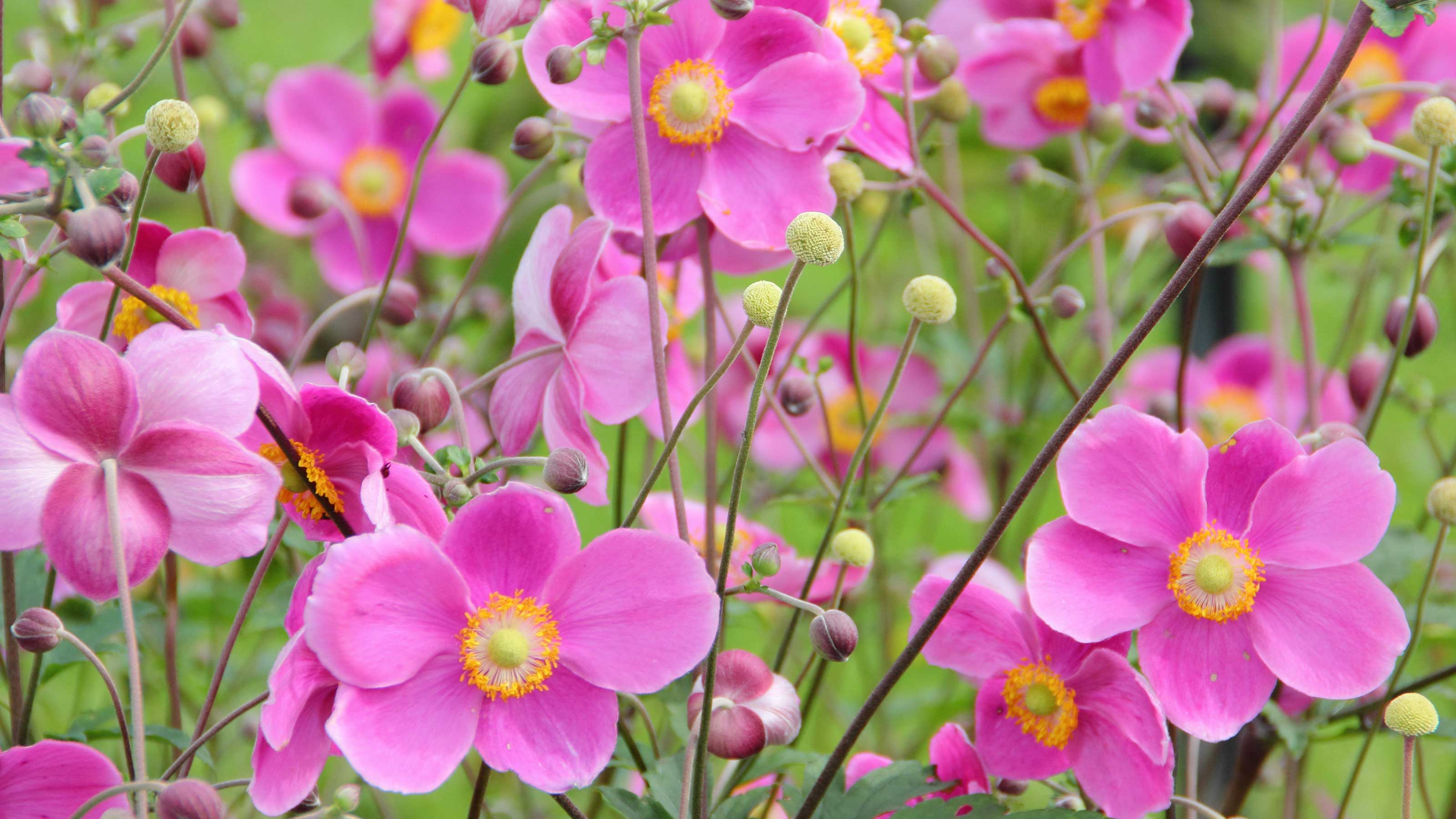
Pink flowers added to the garden can create a comforting, calm mood, and there is a huge range to choose from.
In spring, vivid-magenta elephant’s ears bloom beside rich-pink bleeding hearts, and wands of Byzantine gladioli blaze hot-raspberry in the sun. Then, in summer, there are many wonderful forms of lychnis, salvia, achillea, dianthus, phlox, and penstemon to add blushing pockets of pink.
But, what is the best way to incorporate these rosy perennials into your garden color scheme? The late Christopher Lloyd, who created the garden at Great Dixter, UK, was determined that it must be ‘the "right" shade of pink, as being harmonious and reassuring.’ He was wary of salmon-colored pinks and anything with too much blue in it. But the ‘good’ pinks, which have a radiant, clear color, are easy to fit into a planting scheme.
For instance, he was fond of the oriental poppies ‘Karine’ and ‘Juliane’, and bleeding heart (Dicentra spectabilis). These 'good' pinks complement silver, claret, and glaucous foliage, plus red, orange, and blue flowers.
Both Lloyd and the late gardener Beth Chatto liked to use the often-outlawed combination of yellow and pink. But Lloyd insisted that one of the two would have to be pale: ‘I wouldn’t put a bright pink next to a bright yellow,’ he stated. ‘I would certainly have a soft yellow with a bright pink.’ For instance, he planted the bold-pink Japanese anemone 'Hadspen Abundance’ with the pale-banana Helianthus ‘Lemon Queen’.
But color choice is a very personal thing and, since most perennials are simple to move, if the combination doesn’t work, it is easy to switch. Why not give pink flowers a go in your garden?
16 pink flowers to grow in your backyard
Give your flower beds a rosy charm with these pink flowers. From romantic and pretty to contemporary and structural, there's something for every style in this mix.
1. Lamprocapnos spectabilis
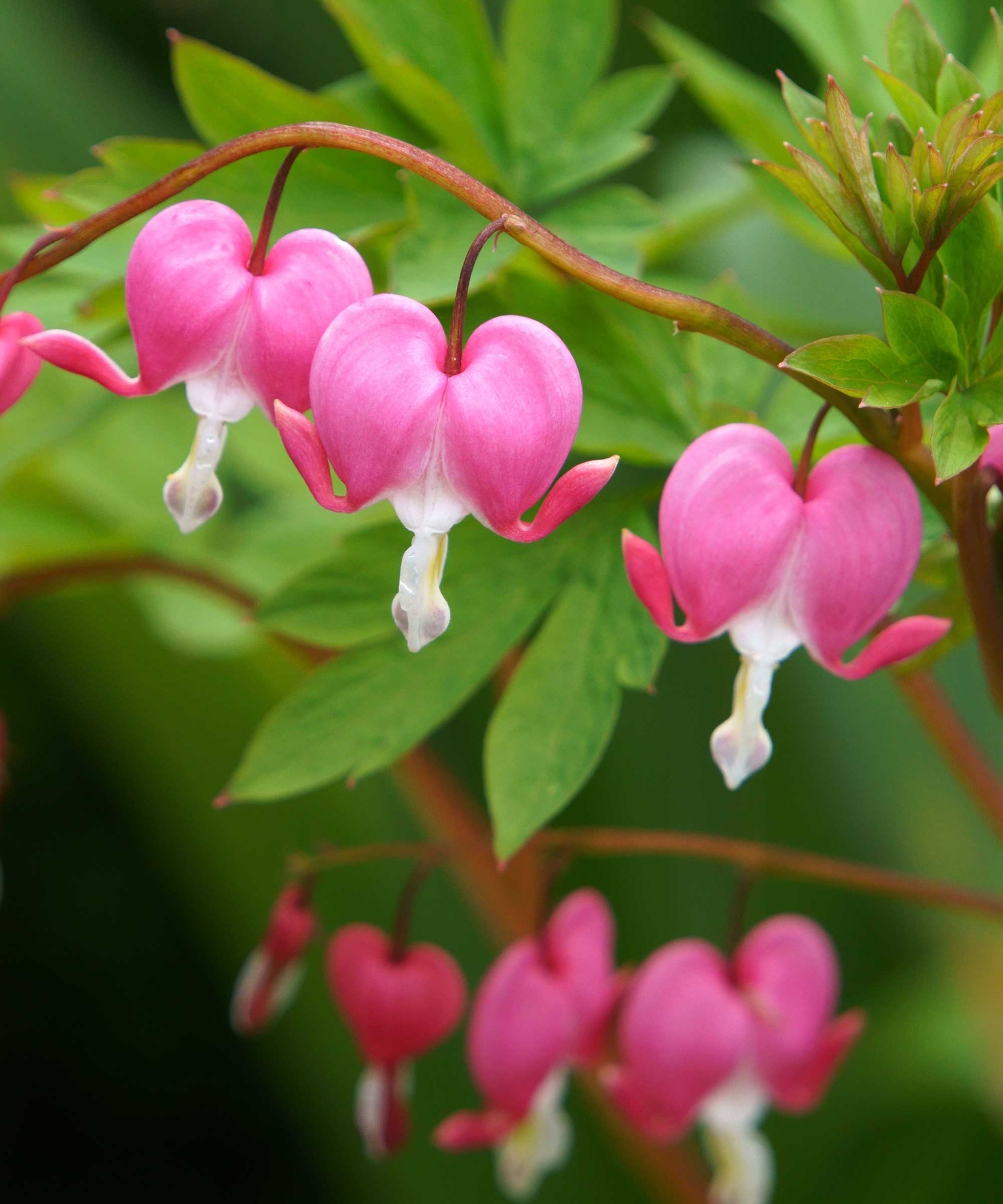
- Height: 24in (60cm)
- Spread: 18in (45cm)
- Hardiness: USDA 3-9 (H6)
- Best for: Spring color
Also known as Dicentra spectabilis or bleeding heart, this plant has locket-shaped pink flowers tipped white that open on arching red stems in spring. The blooms hover above a mass of attractive, divided, green leaves which die right back in summer.
Enjoy them alongside euphorbia, columbines, and forget-me-nots in retentive, well-drained soil in semi-shade.
- Buy Lamprocapnos spectabilis in the US: view at Nature Hills
- Buy Lamprocapnos spectabilis in the UK: view at Crocus
2. Dierama pulcherrimum
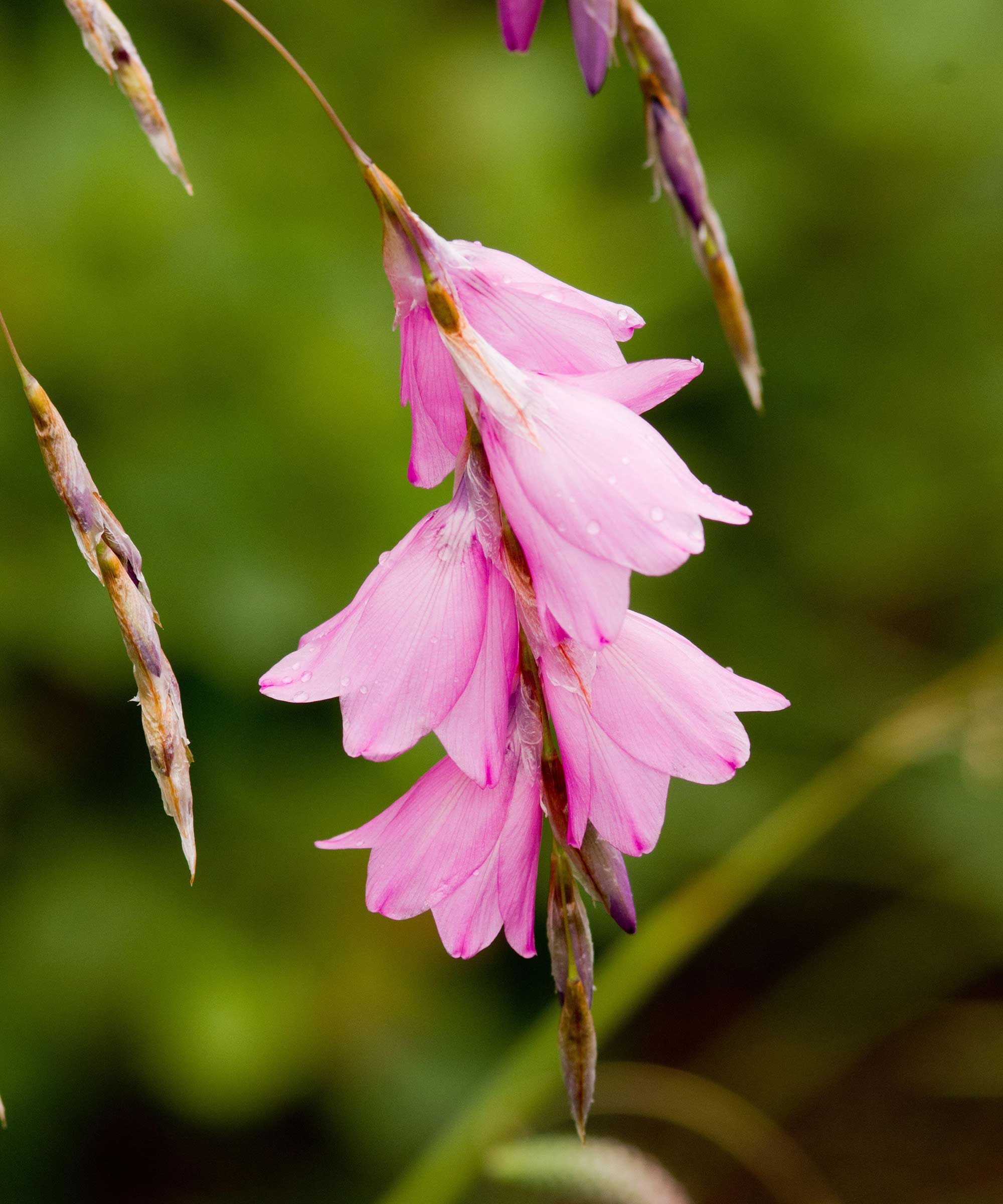
- Height: 4ft (1.2m)
- Spread: 2ft (60cm)
- Hardiness: USDA 7-10 (H4)
- Best for: Mild regions
The angel’s fishing rod is the most enchanting plant in the garden when it blooms in summer. Graceful rose-pink bells dangle on arching wiry stems above evergreen grassy foliage.
It does best in well-drained, humus-rich soil in sheltered full sun. It can take two to three years to begin flowering and may not perform well in cold areas without winter protection.
3. Anemone hupehensis 'Hadspen Abundance’

- Height: 4ft (1.2m)
- Spread: 2ft (60cm)
- Hardiness: USDA 5-8 (H7)
- Best for: Late-season color
Excellent for color in late summer and early fall, this Japanese anemone has beautiful lipstick-pink flowers with gold stamens.
Try growing it with ferns in retentive, well-drained soil in semi-shade. Be warned that it can spread with gusto – if you want to remove some of it, always wear gloves and long sleeves as the plant can irritate the skin.
4. Hordeum jubatum

- Height: 2ft (60cm)
- Spread: 18in (45cm)
- Hardiness: USDA 4-8 (H6)
- Best for: Movement
Foxtail barley is a perennial type of ornamental grass with arching, barley-like pink flowers that add movement and texture to summer borders. It looks wonderful when they catch the low sunlight at the end of the day.
Grow in well-drained soil in an open, sunny position, with salvias and California poppies. It is a short-lived perennial, but will seed itself in the right conditions.
5. Chaerophyllum hirsutum ‘Roseum'
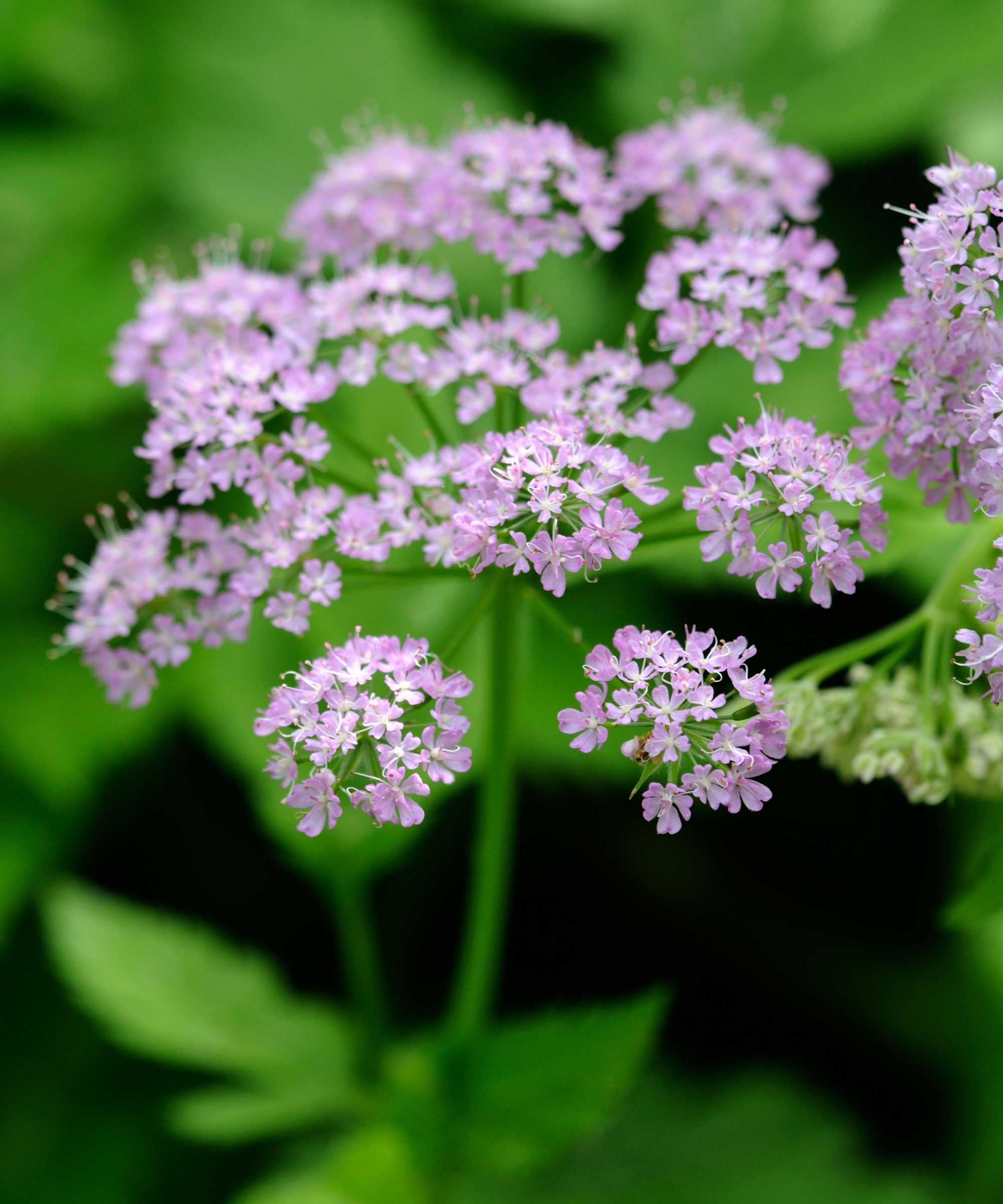
- Height: 3ft (90cm)
- Spread: 3ft (90cm)
- Hardiness: USDA 6-9 (H7)
- Best for: Naturalistic gardens
This hairy chervil resembles pink cow parsley when it blooms in late spring and early summer above lacy, fern-like foliage.
Grow with Geranium phaeum in retentive, well-drained soil in sun or semi-shade. It's perfect for cottage gardens or informal wildlife gardens, since it attracts bees.
Protect it from rabbits if you live in the countryside.
6. Malva moschata
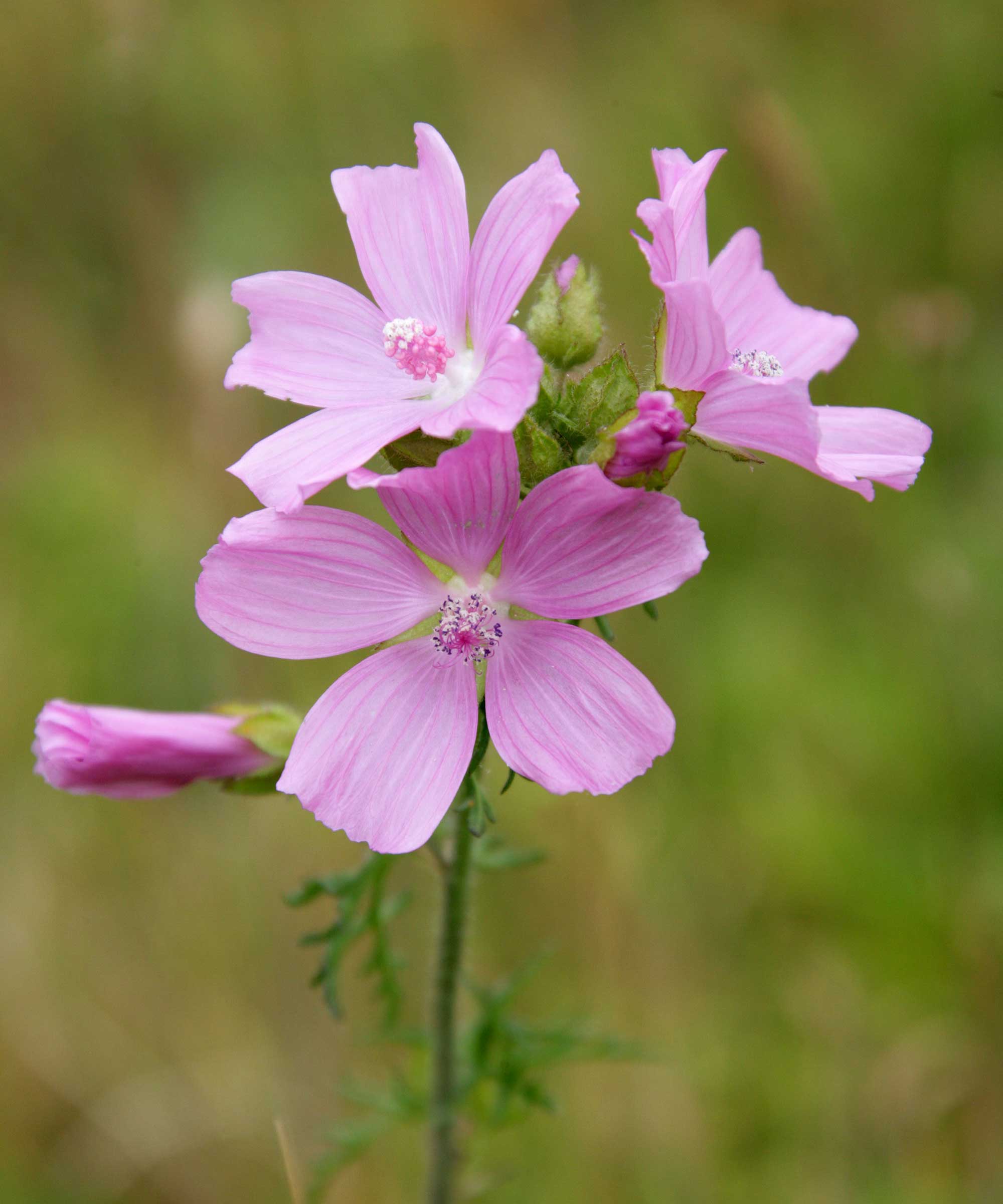
- Height: 3ft (90cm)
- Spread: 2ft (60cm)
- Hardiness: USDA 3-8 (H5)
- Best for: Cottage-garden charm
This musk mallow has fragrant sugar-pink flowers during summer and early fall that provide food for bees.
'The flowers are attractive to both short-tongued bumblebees and honey bees,’ says bee expert Dave Goulson. Planted alongside campanulas, it works beautifully in cottage gardens.
It can be short-lived, but self-seeds in retentive, well-drained soil in sun.
7. Paeonia lactiflora 'Sarah Bernhardt’
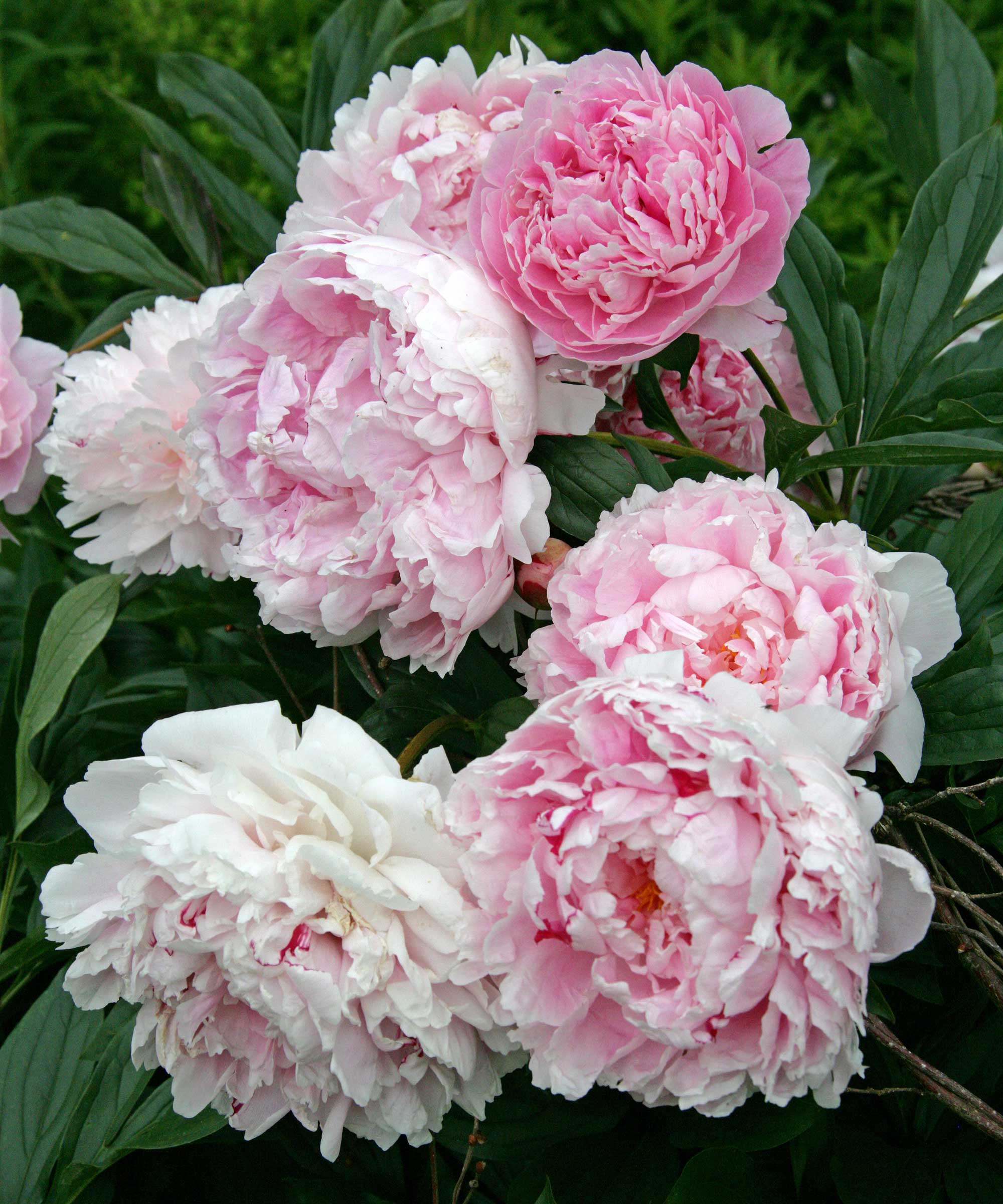
- Height: 3ft (90cm)
- Spread: 2ft (60cm)
- Hardiness: USDA 3-8 (H6)
- Best for: Romantics
This peony has double candyfloss-pink flowers that release a pleasing scent in early summer. The long stems make it an impressive cut flower.
It may take a few years to bloom, but can live for decades. When planting, ensure the eyes (buds) are no more than 0.8in (2cm) below the surface, in well-drained soil in sun.
- Buy Paeonia lactiflora 'Sarah Bernhardt’ in the US: view at Burpee
- Buy Paeonia lactiflora 'Sarah Bernhardt’ in the UK: view at Crocus
8. Muhlenbergia capillaris

- Height: 4ft (1.2m)
- Spread: 20in (50cm)
- Hardiness: USDA 5-9 (H4)
- Best for: Low-rainfall areas
Pink muhly grass is a shimmering airy mass of pink during late summer and fall, adding texture and color to the border. Then, in the winter garden, it looks like spun sugar when it's dusted with white frost.
This perennial evergreen grass is tolerant of drought and coastal conditions and combines well with Russian sage (Salvia 'Blue Spire’) in well-drained soil in full sun.
9. Echinacea 'Delicious Candy'
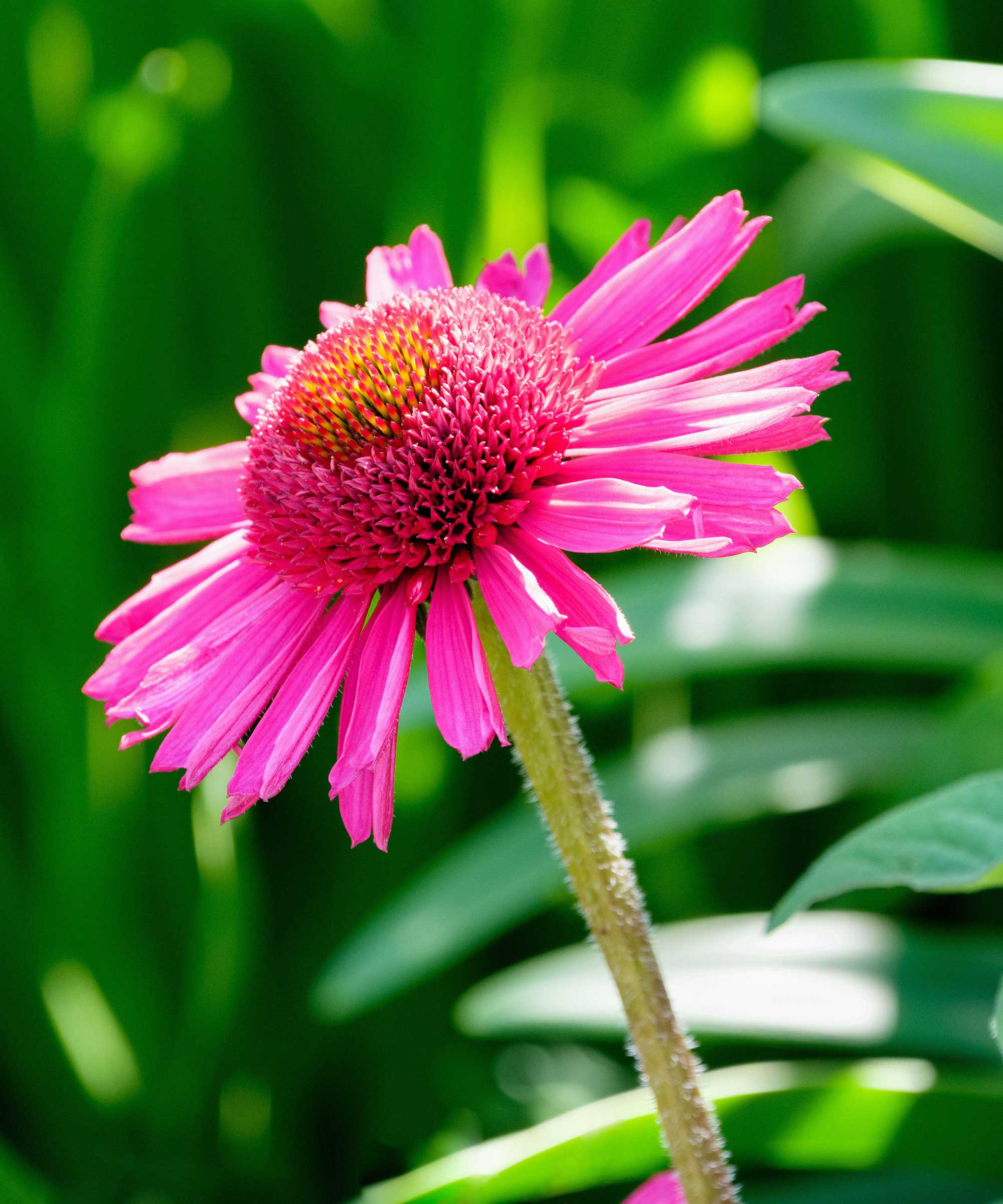
- Height: 30in (75cm)
- Spread: 18in (45cm)
- Hardiness: USDA 3-8 (H5)
- Best for: Butterflies
This vibrant coneflower lures butterflies from mid-summer to mid-fall with its bright raspberry-pink daisies.
Combine with grasses for a prairie-style border or grow it as a cutting garden flower.
Echinaceas fare best in well-drained, deep soil in an open, sunny position. To increase their lifespan, it’s best not to move them once established and to deadhead after flowering.
10. Salvia microphylla 'Cerro Potosí’
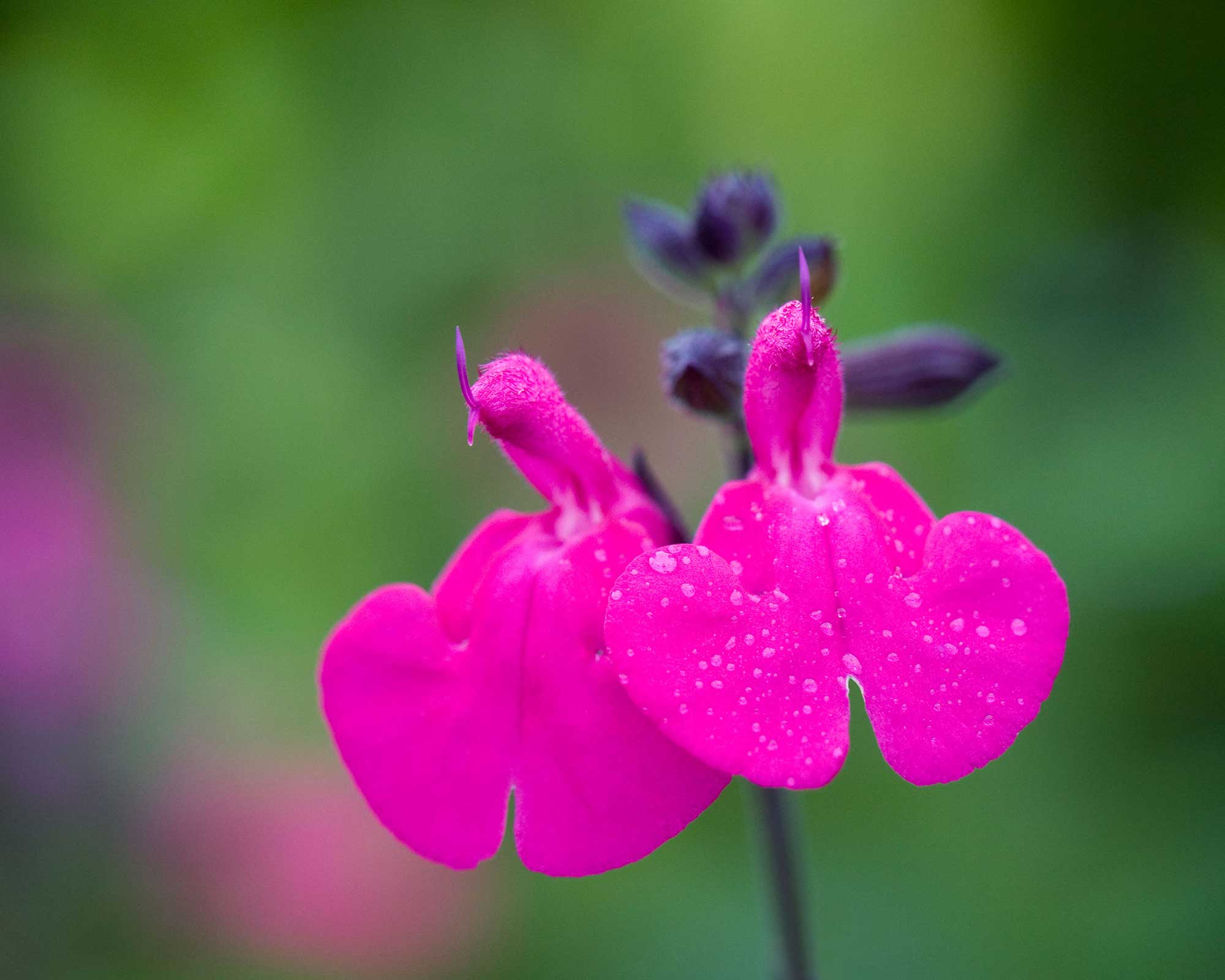
- Height: 3ft (90cm)
- Spread: 2.5ft (75cm)
- Hardiness: USDA 7-10 (H4)
- Best for: Planting with roses
This very useful baby sage produces sizzling hot-pink flowers from mid-summer into late fall. As well as having an airy habit that allows layering in the border, its aromatic leaves help to prevent rose sickness, so plant it alongside shrub roses (such as the claret 'Munstead Wood').
Grow in well-drained soil in full sun and protect from slugs in spring.
11. Dahlia ‘Roxy'

- Height: 20in (50cm)
- Spread: 30in (60cm)
- Hardiness: USDA 8-11 (H3)
- Best for: Pots
Single dahlias are great for color, wildlife, and cut flowers during late summer and fall. This fabulous variety has vivid magenta-pink blooms with golden stamens and, being compact, is perfect for container gardens.
Plant in humus-rich, well-drained soil in sun or in a well-drained pot. Cover with a very thick mound of mulch or, in cold areas, lift and store the tubers indoors before winter.
12. Pennisetum orientale 'Karley Rose’
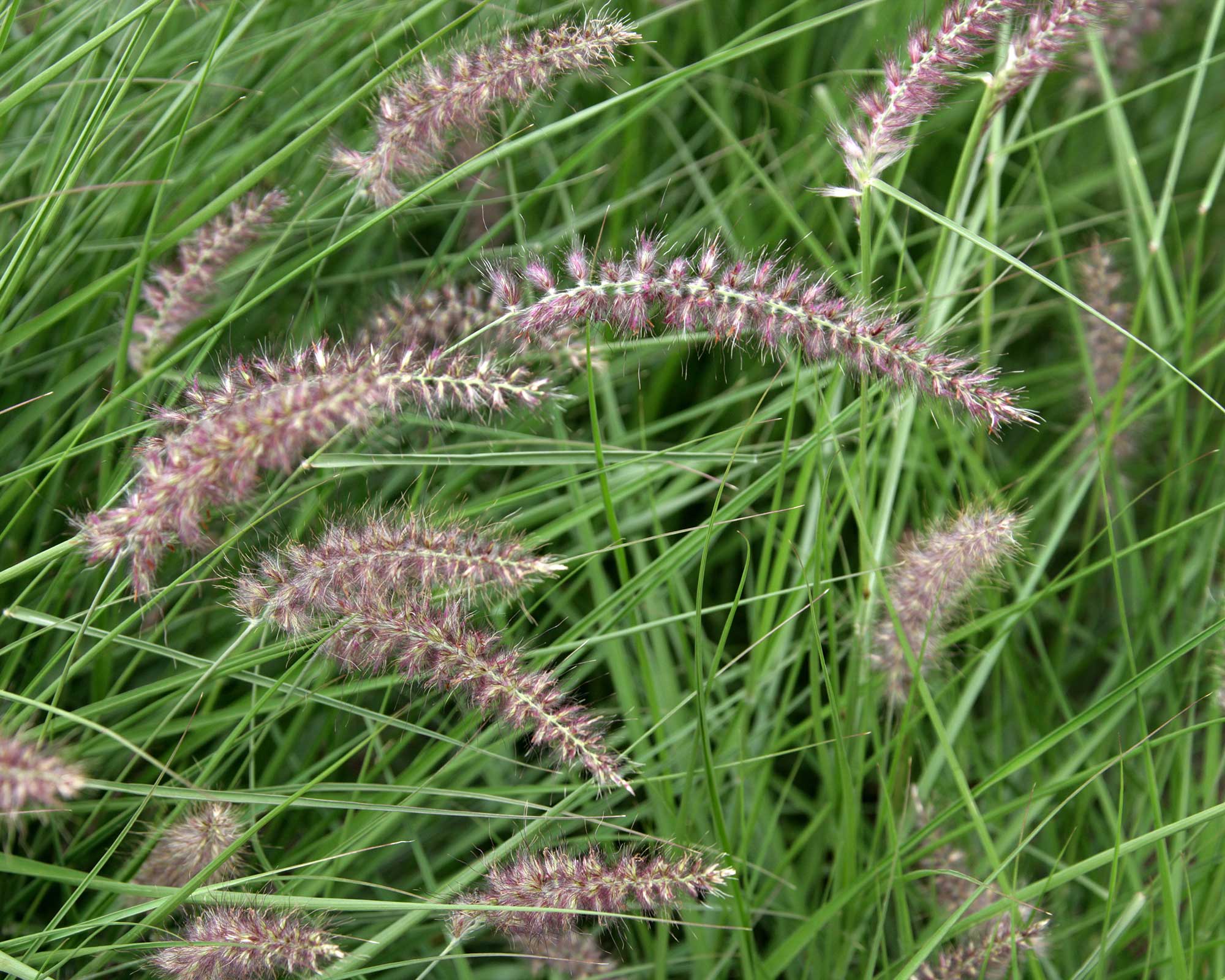
- Height: 4ft (1.2m)
- Spread: 2ft (60cm)
- Hardiness: USDA 5-8 (H4)
- Best for: Texture
This oriental fountain grass produces long bottlebrush-like panicles of dusky-pink flowers in summer above a mound of green leaves. It is an excellent perennial grass for adding softness and texture to a planting scheme, and, like most ornamental grasses, it will add interest during fall.
Grow it with asters in well-drained soil in full sun.
13. Sanguisorba hakusanensis 'Lilac Squirrel’

- Height: 3ft (90cm)
- Spread: 2ft (60cm)
- Hardiness: USDA 4-8 (H6)
- Best for: Feminine flowers
This is a lovely, compact Korean burnet with lilac-pink flowerheads that look like fluffy catkins and dangle above attractive glaucous foliage from midsummer into early fall.
Combine with persicaria and grasses in well-drained, retentive soil in sun or semi-shade. Create new plants by lifting and dividing the perennials with a sharp knife in spring.
14. Liatris spicata ‘Kobold’

- Height: 2.5ft (75cm)
- Spread: 18in (45cm)
- Hardiness: USDA 3-8 (UK H7)
- Best for: Retentive soil
Commonly known as blazing star, this late-season perennial is not widely grown, but deserves to be. The fabulous pokers of fluffy purple-pink flowers are loved by butterflies and rise from whorls of green grass-like leaves in late summer to early fall.
Plant in very well-drained, fertile, retentive soil that is not waterlogged during winter.
- Buy Liatris spicata ‘Kobold’ in the US: view at Burpee
- Buy Liatris spicata ‘Kobold’ in the UK: view at Crocus
15. Veronicastrum 'Adoration'

- Height: 4ft (1.2m)
- Spread: 2ft (60cm)
- Hardiness: USDA 3-8 (H7)
- Best for: Bees
Bumblebees love the lilac-tinged pink flowers of this Culver’s root, which open in slender spikes upon branching stems during midsummer, like a giant candelabra.
It also boasts striking dark-green foliage, which unfurls in rings. Grow it in fertile, retentive, well-drained soil in sun or semi-shade alongside lemon thalictrum. Mulch around the base annually in spring.
16. Phlomis tuberosa ‘Amazone'
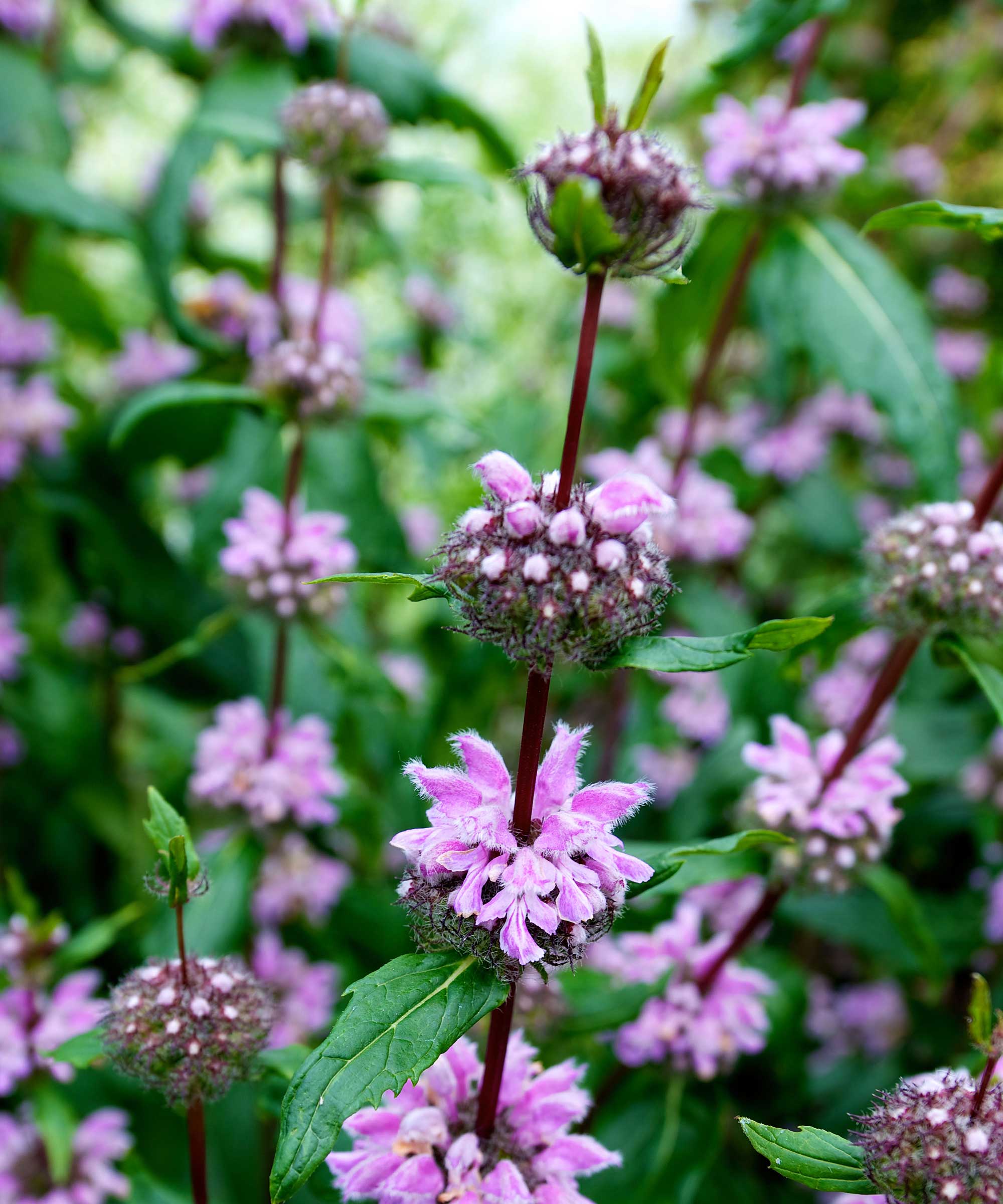
- Height: 5ft (1.5m)
- Spread: 30in (80cm)
- Hardiness: USDA 6-9 (UK H5)
- Best for: Full sun
‘Amazone''s whorls of lavender-pink flowerheads on upright dark stems create gorgeous structure in the border in late summer and as seedheads in fall.
‘The flowers are deep and tubular and so attract mostly our longest-tongued bumblebee: the garden bumblebee (Bombus hortorum),’ says Dave. Try growing it with verbena in very well-drained soil in full sun.
What is the longest-blooming pink perennial?
The stalwart cranesbills Geranium 'Ann Folkard’ and G. x riversleaianum 'Russell Prichard’ both produce magenta-pink flowers at the front of the border over an impressively long period: usually from early summer to mid-fall, but sometimes longer. Russell has gray-green leaves, while Ann’s foliage is golden lime.
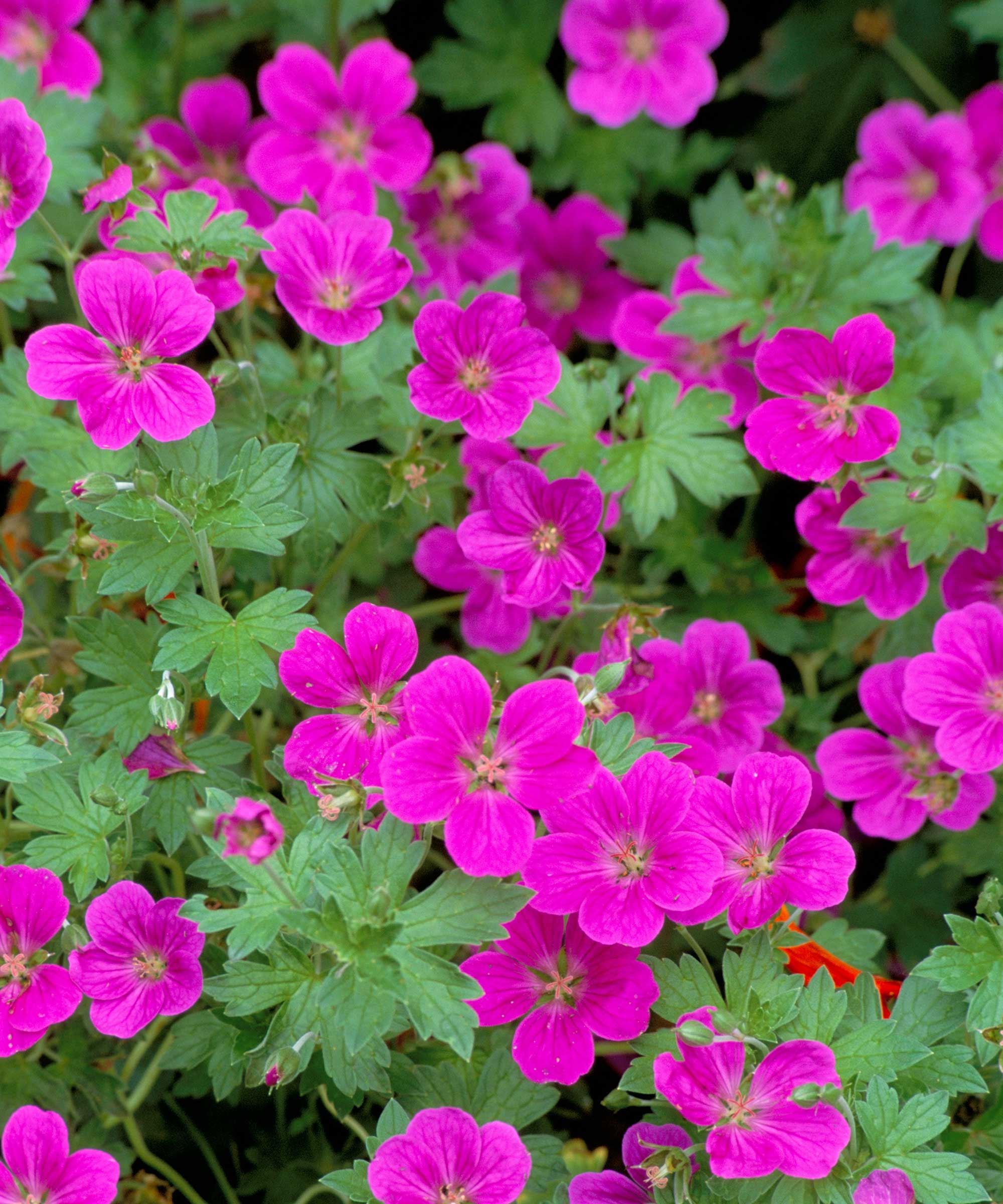
What is a tall pink perennial?
The Joe Pye weed Eupatorium maculatum (Atropurpureum Group) ‘Riesenschirm' produces heads of dusky purple-pink flowers atop 8ft (2.5m) stems and lures butterflies in late summer and fall.
Shorter at 5ft (1.5m) is the lovely cousin of the hollyhock, x Alcalthaea suffrutescens ‘Parkrondell’, which has soft-pink blooms, and the cottage-garden gem 'Strawberry Fair’ delphinium, which sends up spires of pink flowers with white eyes. Both are excellent bee-friendly plants.
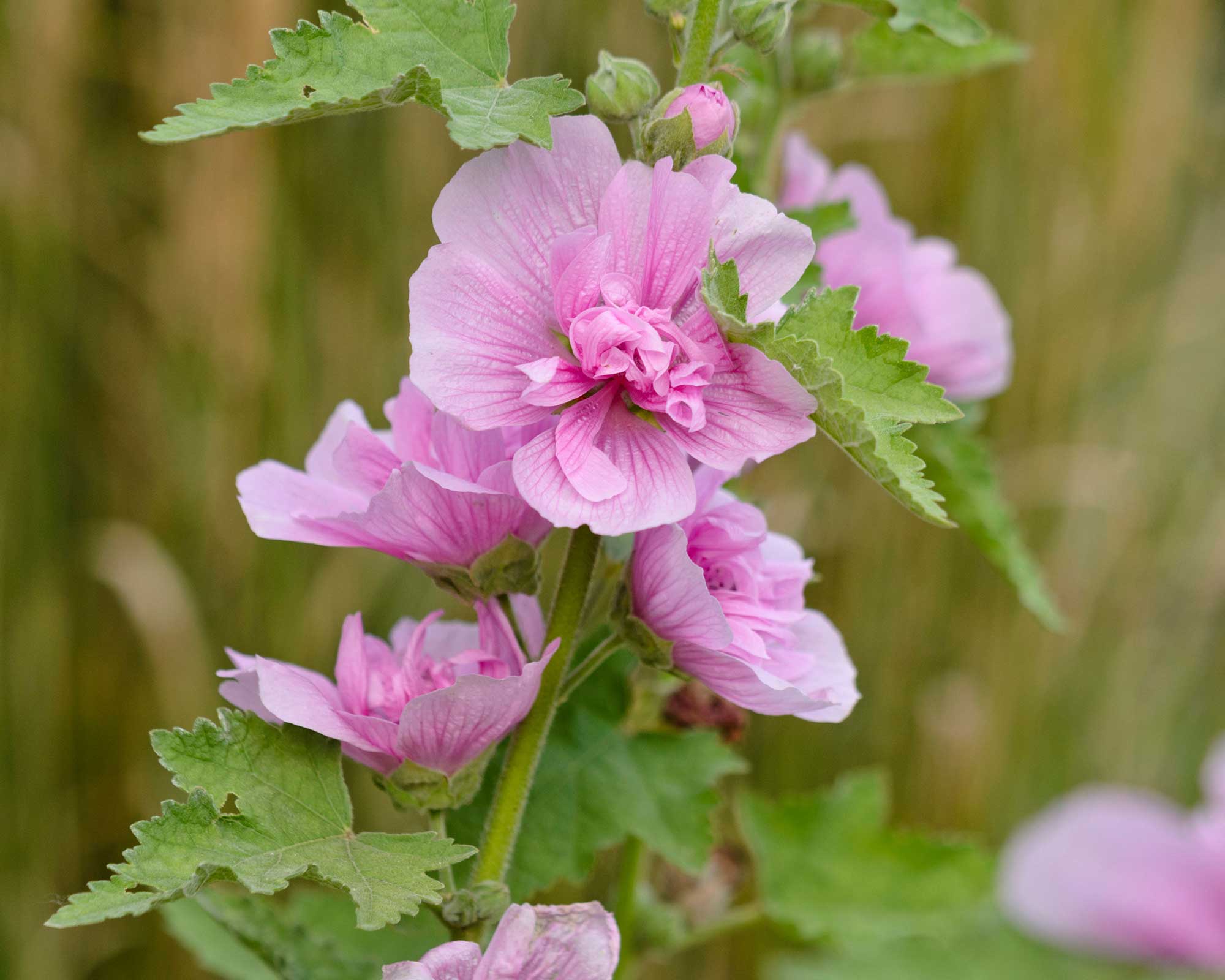
What is the best pink flower for wildlife?
The border stonecrop ‘Herbstfreude’ is superb for pollinators. ‘Some varieties of Hylotelephium attract no insects at all, I suspect because they have no nectar,’ says bee expert and author Dave Goulson. ‘"Herbstfreude' AGM (syn. "Autumn Joy"), on the other hand, is excellent, attracting not just butterflies but also plenty of bees and hoverflies.’
Musk mallow, echinacea, achillea, salvia, and aster are all excellent plants for pollinators, too.

The garden was always a big part of Holly's life growing up, as was the surrounding New Forest where she lived. Her appreciation for the great outdoors has only grown since then. She's been an allotment keeper, a professional gardener, and a botanical illustrator – plants are her passion.
